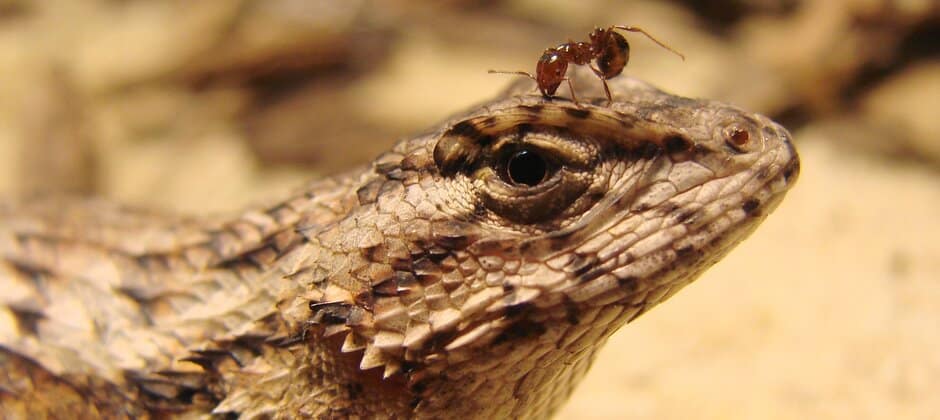Share this article
Lizards evolve antibodies to fight off invasive fire ants
Fence lizards in Alabama are evolving stronger immune systems in response to decades of coping with the venom from invasive fire ants, but they may also become more vulnerable to infection or pathogens.
“Lizards in those areas need those higher antibodies to be able to fight off fire ants,” said Catherine Tylan, a PhD Student at Pennsylvania State University and the lead author of a study published recently in the Journal of Experimental Zoology Part A: Ecological and Integrative Physiology. “It’s a good example of the effects of an invasive species on a native animal.”
Invasive fire ants (Solenopsis invicta) have been plaguing a number of species in the U.S., including gopher tortoises (Gopherus polyphemus) and Attwater’s prairie-chicken (Tympanuchus cupido attwateri). They have also negatively impacted eastern fence lizards (Sceloporus undulatus) in parts of Alabama for 80 years. The ants sting the lizards, which aren’t always quick to respond to a threat they don’t quite understand.
Sometimes ants can overwhelm and even kill the lizards, while in other cases they cause chronic elevated stress levels in the native reptiles, Tylan said. When lizards are stressed, their immune systems may be slower to respond to other threats from disease or infections.
But many studies looking at these impacts have only examined aspects of the immune system rather than looking at it as a whole. Tylan wanted to take a more holistic approach to understand the relationship between ants and lizards in Alabama, measuring a number of different parameters in the immune system.
She and her colleagues compared fence lizards in populations that had been exposed to fire ants for decades to lizards that were naïve to the invasive threat. Their analysis showed that instead of experiencing large-scale changes in their immune systems, changes seemed to be tailored toward the specific stressor.
For example, they found that lizards that dealt with fire ants had higher antibodies likely related to fighting their venom.
But the researchers also found that in lizard populations that were around fire ants, some parts of lizard immune systems were operating at a lower level. These impacts could weaken the lizards’ ability to respond to pathogens or other threats they face, resulting in population level impacts, Tylan said.
“Fire ants are quite impressive and formidable foes to many animals that encounter them,” she said.
She added that while this study only looked at fence lizards, their findings likely have implications for other species affected by invasive fire ants.
“It’s useful as a model system to figure out how immune systems might change in other organisms,” she said.
Header Image: An invasive fire ant sits on an eastern fence lizard’s head. Credit: Travis Robbins and Tracy Langkilde








